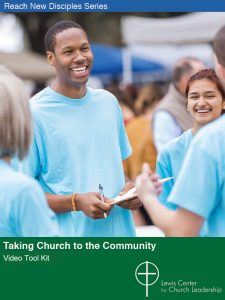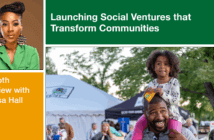Kay Kotan says we can no longer wait for people to come to church. The church must go out into the community and meet its neighbors. She provides ten easy strategies for your church to build genuine connections with your neighbors.
What church doesn’t want to form new relationships with their neighbors, right? Desire is not the issue! More often than not, the dilemma is more about how to connect with your neighbors. In our modern culture, relationships are formed differently than they once were. Just like the people who are looking for life partners meet and build those relationships differently in today’s world, the church must adapt the way we meet and build relationships with our neighbors. We must move beyond the expectation that our neighbors will come to us. Instead, we must adapt and adopt the model that Jesus provided and go out to meet our neighbors.
Here are ten tips for your church to consider in building genuine connections with your neighbors:
1. Patronize the businesses in your church’s neighborhood. Get to know the owners and/or managers. Ask how the church can support them, their employees, and their business.
2. Walk the neighborhood — repeatedly. Pray as you walk. Pray for the neighbors, the community, the well-being of your neighbors, and that God would open the eyes of the church for how to connect with the neighbors in meaningful ways to provide a positive impact for the community as a whole and the individuals who make up the community.
3. Be more present in the community. Be in the places where the community is already gathering (i.e., city meetings, neighborhood watch groups, homeowners’ associations, school board meetings, parent teacher associations, etc.). Listen to what your neighbors are involved in, what they care about, what concerns they have, and what gaps exist. Where does the church have gifts and passion that could address one of those gaps or concerns that no one else can address? How might your congregation be called to eliminate this identified gap?
4. Conduct a community focus group to learn more about your neighborhood.
5. Invest in one-on-one conversations with neighbors. Approach the conversations with curiosity, a genuine interest in the person, and a desire to know them, hear their story, and understand them. The purpose is not to persuade them to come to church! The purpose is to know and understand your neighbors stories so you can better connect and serve with your neighbors. Strive to listen (not talk) through 80 percent of the conversation.
6. Have repeated conversations with those same neighbors to begin to form relationships and build trust.
7. Work with community partners to better your community. For example, team up with another organization and conduct a makeover on the city playground. Invite the neighborhood to participate. Hold a neighborhood celebration when the project is completed.
8. Consider starting a Turquoise Table movement in your neighborhood. Have multiple open tables at homes of church members to begin connecting and building relationships with neighbors. See The Turquoise Table.
9. Walk your neighborhood and bless people. For example, hand out bottled water or seedlings to people working in their lawns or sitting on their front porch. Gift a bottle of bubbles to children out playing in their yards or in the park (with parental permission). Perhaps wear your church T-shirt declaring the church has left the building, but again it’s not about inviting people to church. It is the simple gesture of being neighborly and blessing people.
10. Deliver donuts or other special goodies to local school personnel and businesses. Thank them for serving and investing in the community.
None of these tips are difficult nor are they expensive. They are also not a one and done checklist. Choose two or three ideas that resonate with your congregation, your congregation’s giftedness, and will best connect with your context and provide the most impact. Then, repeat those activities. It is through that repetition and the investment in building connections that trust and genuine relationships will build over time.
This article is adapted from a post on Kay Kotan’s website, You Unlimited: Guidance to Paths of Clarity. Used by permission.
 Related Resources
Related Resources
- Taking Church to the Community, a Lewis Center video tool kit resource
- How One-to-One Conversations Reintroduced a Church to its Neighbors by Travis Norvell
- Listening to Your Community by Paul Nixon






